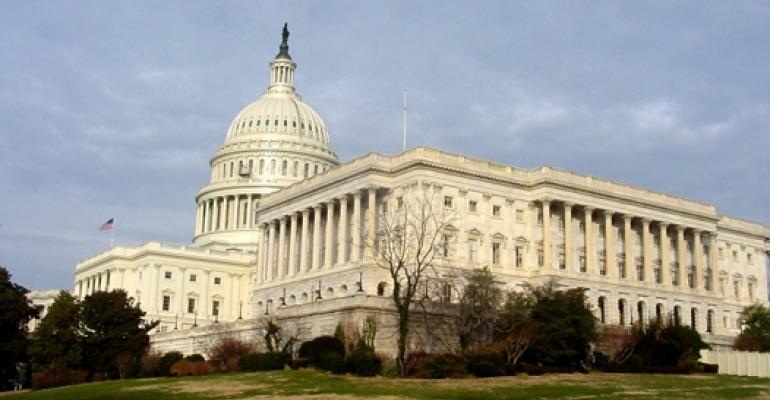The Democratic presidential contenders may differ regarding solutions for issues such as health care and climate change but seem to agree that much of 2017’s Tax Cuts and Jobs Act should be undone. So, what might a Democratic “trifecta”—as in control of the White House, House and Senate after the 2020 elections (or those in 2022 or 2024)—mean for wealth planning?
Legislation introduced by Sen. Bernie Sanders (D-VT) early this year may offer a clue. “For the 99.8 Percent Act” (S. 309) resembles President Barack Obama’s wealth planning proposals and would significantly increase transfer taxes. It would accomplish this, in part, by reverting to an unindexed $1 million gift tax exclusion and a $3.5 million estate tax exclusion and generation-skipping transfer (GST) exemption (the 2009 numbers), and by making transfer tax rates more progressive (they would top out at 77% on taxable assets over $1 billion).
The bill would also limit or eliminate many current wealth planning tools, including the following:
- Valuation discounts for transfers of entity interests in “nonbusiness” assets would be disallowed, as would minority discounts in valuing transfers of non-actively traded entity interests.
Comment. Eliminating discounts for nonbusiness-related property would apply, for example, to entities funded with marketable securities. Yet with the current inflation-indexed gift and estate tax exclusion and GST exemption at $11.4 million per individual or $22.8 million per married couple (in 2019), such discounts may not matter for most people, who are likely unaffected by transfer taxes. Yet if those taxes do once again affect many, the loss of these discounts will be keenly felt.
- ”Zeroed-out” grantor retained annuity trusts (GRATs) would effectively be disallowed as GRATs would need to have: 1) a fixed term of at least 10 years and not more than the grantor’s life expectancy plus 10 years; 2) annuity payments that couldn’t decline; and 3) a gift of the remainder interest at the trust’s creation of the greater of (i) 25% of the fair market value (FMV) of the property transferred to the trust or (ii) $500,000 (but not greater than the FMV of the property in the trust).
Comment. Mandating at least a 10-year term for the GRAT increases the grantor’s mortality risk, and requiring a significant gift at the trust’s creation requires use of the grantor’s gift tax exclusion. Such provisions would make GRATs far less effective and require grantors to have “more skin in the game.”
- Sales to “defective” grantor trusts (sales) would effectively be eliminated since the bill, in part, would require that “defective” grantor trusts (where the grantor owns the trust for income, but not estate, tax purposes) be includable in the grantor’s estate at death; in addition, trust distributions to beneficiaries would be treated as a gift from the grantor as long as the trust was still “defective” (if the trust ceased to be a defective grantor trust during the grantor’s lifetime, the grantor would be treated as making a gift of the trust assets).
Comment. Such a provision would not only eliminate sales but also be a disincentive to create any irrevocable defective grantor trust—irrespective of whether there was a sale—because the trust would be includable in the grantor’s estate at death.
- The GST exemption would be limited to 50 years for newly created trusts, and if such trusts had a termination date later than 50 years, their “inclusion ratio” would be 1—in other words, these trusts would have no GST protection. Existing trusts that were currently protected from GST could enjoy that protection for an additional 50 years.
Comment. Capping the GST exemption at 50 years (or denying it altogether for a new trust lasting longer than that) would put a hard stop to multigenerational planning, particularly, say, Delaware dynasty trusts that are designed to last “forever.”
- “Simplifying” annual exclusion gifts is shorthand for eliminating the “present interest” requirement for annual exclusion gifts. Although this would obviate Crummey notices for gifts in trust, transfers “subject to a limitation,” such as those in trust or those that can’t be sold or immediately liquidated, would be capped, in the aggregate, at twice the annual exclusion amount; Internal Revenue Code Section 2503(c) trusts would also be repealed.
Comment. Capping a donor’s aggregate annual exclusion at twice that amount for transfers “subject to a limitation” would seriously hamper, for example, the funding of insurance trusts or gifts of limited partnership interests; donors would still be free to make unlimited “unrestricted” annual exclusion gifts, however.
Take Advantage of Planning Opportunities
The enactment of wealth planning limitations such as those discussed above would require a Democratic “trifecta,” which still doesn’t guarantee enactment. Yet if provisions like these do become law and clients didn’t take advantage of planning opportunities when they could have, they (and their advisors) will be very unhappy.
*The opinions and analyses expressed herein are those of the author and do not necessarily reflect those of Deutsche Bank AG or any affiliate thereof.





